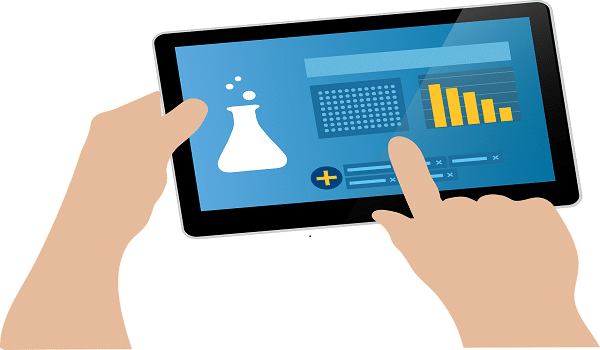How can you transform your production line into a profit-generating machine? Why do some industrial companies achieve exceptional efficiency while others struggle to maintain their competitiveness? Production efficiency has become today’s flagship indicator that separates market leaders from struggling enterprises. In an economic context where every percentage point of efficiency matters, optimizing production efficiency becomes an absolute necessity for survival and prosperity.
Current industrial challenges are numerous: shortage of skilled workforce, increasing process complexity, enhanced quality requirements, and cost pressures. Nevertheless, companies that adopt a structured approach and rely on innovative digital solutions manage to transform these obstacles into opportunities. This guide reveals the winning strategies to maximize your production efficiency in 2025.

Key takeaways regarding production efficiency:
- Measurable performance: Production efficiency is calculated through precise indicators such as OEE (Overall Equipment Effectiveness) and synthetic efficiency rate
- Determining factors: Operator training, process standardization, and quality of work instructions directly influence results
- Necessary digitalization: Connected solutions enable an average improvement of 15 to 25% in efficiency according to sectoral studies
- Financial impact: Each efficiency point gained generally represents annual savings for an industrial SME
- Real-time measurement: Instant data collection enables rapid adjustments and continuous optimization
1. What is production efficiency and why is it crucial?
Production efficiency represents much more than a simple indicator: it constitutes the operational health barometer of your company.
This fundamental metric measures the effectiveness with which your resources (time, raw materials, equipment, personnel) are transformed into quality finished products.
Understanding its components and impact allows identification of the most relevant improvement levers.
1.1. Definition and components of production efficiency
Production efficiency is defined as the ratio between actual production and maximum theoretical production possible. It integrates three essential components:
- Availability: Percentage of time when equipment is operational
- Performance: Actual production speed compared to theoretical speed
- Quality: Proportion of conforming products relative to total production
This multidimensional approach enables precise identification of loss sources. For example, availability of 85%, performance of 90%, and quality of 95% yield an overall efficiency of 72.7%.
1.2. Key efficiency indicators (OEE, synthetic efficiency rate)
The OEE (Overall Equipment Effectiveness) and synthetic efficiency rate constitute international references for measuring efficiency:
- OEE = Availability × Performance × Quality
- Loss calculation: Planned stops, breakdowns, micro-stops, slowdowns, quality defects
- Sectoral benchmarks: Automotive industry (65-75%), food processing (60-70%), pharmaceuticals (55-65%)
OEE also enables identification of the “six big losses” in manufacturing. First, equipment breakdowns reduce availability. Second, setup and changeovers impact performance. Third, quality defects decrease overall efficiency.
1.3. Direct impact on company profitability
Efficiency improvement generates immediate and lasting benefits:
- Cost reduction: Less waste, resource optimization
- Revenue increase: Enhanced production without additional investment
- Competitiveness improvement: Shortened lead times, reinforced quality
A study reveals that a 10% efficiency improvement can generate up to 30% increase in operational margin. However, benefits extend beyond financial scope: enhanced customer satisfaction, team motivation, improved brand image.
2. What are the main factors influencing production efficiency?
Numerous interdependent factors impact production efficiency. Identifying and controlling these variables enables effective action on performance. The systemic approach considers all elements: human, technical, organizational, and technological.
This global vision avoids partial optimizations that create bottlenecks elsewhere in the process.
2.1. The human factor: operator training and expertise
Operators constitute the heart of the production system. Their expertise largely determines quality and efficiency:
- Initial training: Procedure mastery, quality issue understanding
- Continuous training: Skill updates, new technology learning
- Versatility: Ability to intervene at different stations according to needs
Training quality directly impacts results. Thus, well-trained operators reduce errors by 40% on average. Furthermore, they detect anomalies more quickly and propose improvements.
2.2. Process standardization
Standardization ensures repeatability and consistent quality:
- Documented procedures: Clear and updated instructions
- Work methods: Optimized gestures, defined sequences
- Quality controls: Systematic verification points
Without standardization, performance fluctuates according to operator and timing. Moreover, best practice transmission becomes difficult. Standardization also enables easier identification of deviations and improvement sources.
2.3. Quality of work instructions
Precise and accessible work instructions constitute a key factor:
- Visual clarity: Diagrams, photos, explanatory videos
- Accessibility: Immediate availability at workstations
- Updates: Synchronization with technical evolution
Paper instructions present several disadvantages: rapid obsolescence, update difficulties, deterioration risk. Consequently, digital solutions offer a more efficient and flexible alternative.
2.4. Equipment maintenance
Preventive and predictive maintenance optimizes availability:
- Planning: Scheduled interventions during production stops
- Monitoring: Critical parameter surveillance
- Predictive maintenance: Intervention before failure through data analysis
Effective maintenance reduces unplanned stops by 30 to 50%. It also extends equipment lifespan and improves reliability.
3. How to effectively measure production efficiency?
Precise measurement of production efficiency constitutes the prerequisite for any improvement. Without reliable data, decisions rest on often erroneous intuitions.
Production system measurement digitalization revolutionizes data collection and analysis. This transformation enables real-time management and rapid adjustments.

3.1. Traditional vs. digital measurement tools
Traditional methods present important limitations:
- Manual measurements: Periodic input, human error risk
- Static dashboards: Delayed updates, partial vision
- Retrospective analysis: Late problem identification
Digital solutions offer decisive advantages:
- Connected sensors: Automatic data collection
- Dynamic dashboards: Real-time visualization, automatic alerts
- Predictive analysis: Malfunction anticipation
This technological evolution enables transition from reactive to proactive approach. Indeed, early drift identification prevents significant losses.
3.2. The importance of real-time data collection
Real-time collection transforms production management:
- Reactivity: Immediate deviation correction
- Traceability: Complete operation history
- Continuous optimization: Factual data-based adjustments
Real-time systems enable instant anomaly identification. Moreover, they facilitate decision-making through updated information. Complete traceability meets quality and regulatory requirements.
3.3. Essential KPIs to monitor
Several key indicators merit continuous monitoring:
- OEE/Synthetic efficiency rate: Global performance indicator
- Cycle time: Process efficiency
- Defect rate: Production quality
- Mean time between failures (MTBF): Equipment reliability
- Mean time to repair (MTTR): Maintenance efficiency
These KPIs must be adapted to each company’s specific context. Their regular monitoring enables trend identification and problem anticipation.
4. What solutions to improve production efficiency?
Production efficiency improvement requires a methodical approach and adapted solutions. High-performing companies combine organizational optimization and technological innovations.
This hybrid strategy enables obtaining lasting and measurable results. The objective consists of creating a virtuous cycle of continuous improvement.
4.1. Work instruction digitalization
Digitalization revolutionizes know-how transmission:
- Interactive instructions: Step-by-step guidance, stage validation
- Multimedia formats: Videos, animations, augmented reality
- Personalization: Adaptation to each operator’s skill level
- Instant updates: Automatic modification synchronization
Solutions like Picomto enable creation of intuitive digital instructions. They significantly reduce operational errors and accelerate training. Moreover, they ensure perfect practice standardization.
4.2. Process optimization through data
Data analysis reveals unsuspected improvement opportunities:
- Bottleneck identification: Cycle time analysis
- Flow optimization: Wait time reduction
- Failure prediction: Targeted preventive maintenance
Artificial intelligence algorithms detect complex correlations. They enable automatic optimization of certain production parameters. This data-driven approach generates substantial gains.
4.3. Continuous team training
Investment in human capital remains fundamental:
- Personalized training programs: Individual need adaptation
- Modular training: Progressive and flexible learning
- Skill assessment: Progress tracking and certification
Digital training offers new advantages: 24/7 accessibility, individualized tracking, reduced costs. It also enables faster and more efficient skill development.
4.4. Remote assistance for complex operations
Remote assistance democratizes expertise:
- Real-time support: Expert intervention without travel
- Visual diagnosis: Cameras and connected objects
- Collaborative resolution: Screen sharing and annotations
This approach reduces downtime and improves incident resolution. It also enables capitalizing on internal expertise and broader dissemination.
5. How does digitalization revolutionize production efficiency?
Digital transformation disrupts traditional optimization methods. Connected technologies offer unprecedented possibilities for improving production efficiency.
This technological revolution enables companies to achieve previously inaccessible performance levels.
5.1. Advantages of a connected solution
Digital solutions like Picomto radically transform production management. They provide several concrete benefits:
- Real-time monitoring: Instant access to performance data
- Automatic alerts: Immediate notification of deviations or problems
- Digital instructions: Step-by-step operator guidance to reduce errors
- Complete traceability: Detailed history of each operation
- Predictive analysis: Failure anticipation and maintenance optimization
These functionalities enable exceptional reactivity. Teams can correct drifts before they significantly impact efficiency.
5.2. Case studies and concrete results
Several companies have transformed their efficiency through digitalization:
- Agromousquetaire increased its productivity by standardizing processes with Picomto. Operators now follow precise digital instructions, considerably reducing errors.
- Daher optimized its preventive maintenance, decreasing unscheduled stops. New operator training time was reduced by half.
- Marine Nationale improved traceability of critical operations, ensuring consistent quality while accelerating processes.
These results demonstrate the tangible impact of digitalization on production efficiency.
5.3. ROI of digital transformation
Investment in digitalization generates measurable returns:
- Cost reduction: Less waste, stops, and material loss
- Quality improvement: Process standardization and error reduction
- Productivity gains: Cycle time optimization and accelerated training
- Maintenance savings: Failure prevention and intervention optimization
Typically, companies observe positive ROI within 6 to 12 months following implementation. This rapid return amply justifies the initial investment.
Conclusion
Production efficiency constitutes a strategic indicator for any industrial enterprise. Its measurement and optimization require a methodical approach and adapted tools. Digitalization offers powerful and measurable improvement levers.
Companies that resist digital transformation progressively lose their competitiveness. Connected solutions no longer represent a competitive advantage but a necessity for survival in the modern economy.
Ready to transform your production efficiency? Contact our experts for a personalized demonstration of our solutions.
FAQ
How to calculate production efficiency?
Divide actual production by maximum theoretical production, then multiply by 100.
What is production efficiency?
It’s the ratio between effective production and theoretical maximum capacity of a line.
What is the difference between efficiency and productivity?
Efficiency measures effectiveness, productivity quantifies production per unit of time.
How to calculate efficiency value?
Apply the formula: (Actual Production / Theoretical Production) × 100 = Efficiency%.
What is efficiency?
It’s the effectiveness with which resources are transformed into finished products.
How is efficiency measured?
Through indicators like OEE, cadence, and defect rate.






Leave A Comment